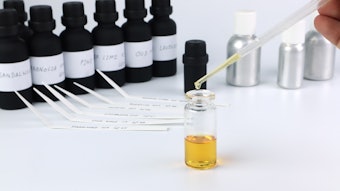In 1869 the Peppermint King, Albert May Todd, founded A.M. Todd in Kalamazoo, MI; the company quickly became the world’s leading producer of high quality peppermint and spearmint oils. As the company nears its 140th anniversary, it’s expanding its business model from being a supplier of mint oils and other flavor ingredients to being a provider of value-added flavor formulations and applications. The Perfumer & Flavorist magazine team recently visited the company’s headquarters in Kalamazoo, MI, to tour the facility and find out what’s new for A.M. Todd.
As Chuck Dodson explained to us, A.M. Todd isn’t looking to be another IFF; the company’s goal is to continue to strengthen its niche position in the industry. In its ingredients and flavors business, the company remains committed to its mint heritage with its competency brand—Elemints. Additionally, to fortify its mint business, A.M. Todd maintains an edge in plant genetics and agronomy to develop new types of mint. In fact, this has been key to the company’s history and success in mint. A.M. Todd developed the first hybrid plants that were highly resistant to Verticillium Wilt disease, a soil-borne fungus that plagued mint growers for decades. Two strains, Todd Mitcham and Murray Mitcham, were released to the industry in the 1970s.
Having long been known for its naturals, A.M. Todd’s acquisition of Moore Ingredients in 2007 has bolstered its position as an organic ingredient supplier. A.M. Todd’s Citrus Specialties focuses on the company’s citrus capabilities, while the formation of Taste Advantage in 2006 develops natural flavor systems that include sweetness enhancers and bitter masking agents.
A relatively new venture, which emphasizes the company’s dedication to sustainable agriculture and environmental protection, is its Royal Organic Products. A byproduct of mint oil production is the mint hay—the spent mint product. Instead of letting this byproduct go to waste, A.M. Todd decided to take advantage by selling it to be used as compost. This not only cuts down on the waste from mint production, but helps organic farmers who can use this compost as fertilizer. In fact, the mint hay compost has been shown to improve farmers’ yields.
Walking through A.M. Todd’s headquarters and seeing the history that permeates the atmosphere, it would not be a surprise to discover a company satisfied with resting on its laurels. But that’s not what we found in Kalamazoo. While A.M. Todd has built on its heritage to grow the company in mint, it has also continually sought out technologies and strategic acquisitions to grow the company in plant science, organics, value-added flavor applications, and much more, making it a company firmly based in the 21st century.










